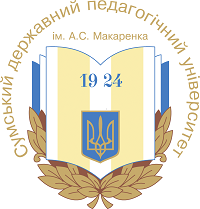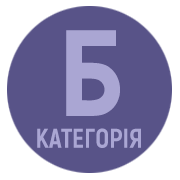CHURCH SLAVONIC LANGUAGE IN THE EDUCATIONAL TRAJECTORY OF THEOLOGY STUDENTS
DOI:
https://doi.org/10.32782/philspu/2025.11.23Keywords:
Church Slavonic language, theology, educational trajectory, language training, competences, Ukrainian recension of Church SlavonicAbstract
Thе article explores the place and significance of the academic discipline «Church Slavonic Language» within the educational trajectory of undergraduate theology students. It argues that the training of a competent specialist in the field of theology requires a solid philological foundation, encompassing mastery of several languages – Ukrainian, Greek, Latin, and Church Slavonic. The latter is of particular importance, as it historically functioned as the language of the Ukrainian Church and continues to be employed in liturgical practice, thereby securing its essential role in shaping the spiritual and cultural orientation of future clergy.The research examines the current higher education standard for the specialty «Theology» (bachelor’s level), alongside educational and methodological resources as well as contemporary textbooks. The findings demonstrate that the study of Church Slavonic equips students with key general and professional competences, including the ability to analyze biblical texts, to comprehend the historical and cultural context of their production, to compare diverse theological traditions and translations, and to engage in dialogue within multiconfessional and socio-political settings.A crucial aspect of the discipline is the development of students’ linguistic-analytical skills (phonetic, morphological, and syntactic) in working with ancient texts, their capacity to differentiate between Old Church Slavonic and Church Slavonic texts, and to comment on their distinctive features. Significant emphasis is placed on the practical application of Church Slavonic texts, particularly within liturgical practice, as well as on the cultivation of reading and translation skills in accordance with the Ukrainian recension, which contributes to the preservation of the national ecclesiastical tradition.The discipline «Church Slavonic Language» is closely integrated with other curricular components – «Ukrainian Language for Professional Purposes» «Ancient Greek», «Latin», «Church History» and «Liturgical Practice». Such interconnection enables the comprehensive formation of a body of knowledge and skills necessary for the professional and educational activity of future theologians.
References
Царалунга І.Б. (2022, Липень 28). Місце історико-мовних дисциплін в освітньо-професійній програмі філолога-україніста. Освіта збереже Україну : матеріали І Всеукраїнських Прокопенківських читань. Харків, Україна, 2022. С. 359–365.
Стандарт вищої освіти зі спец. 041 Богослов’я галузі знань 04 Богослов’я для першого (бакалаврського) рівня вищої освіти : затв. Наказом Міністерства освіти і науки України № 1483 від 30.12.2021. Київ, 2021. 14 с. Режим доступу: https://mon.gov.ua/static-objects/mon/sites/1/vishcha-osvita/zatverdzeni%20standarty/2021/12/30/041-Bohoslovya.bakalavr.30.12.21.pdf
Скаб М. В. Церковнослов’янська мова української редакції. Чернівці : Технодрук, 2020. 644 с.
Скаб М. В., Артеменко Г. С. Церковнослов’янська мова: навчально-методичний посібник для студентів-теологів. Чернівці : Чернівецький нац. ун-т ім. Юрія Федьковича, 2022. 120 с.
Німчук В., Пуряєва Н. Український «Отче наш»: хрестоматія перекладів. К. : Грані-Т, 2013. 228 с.








